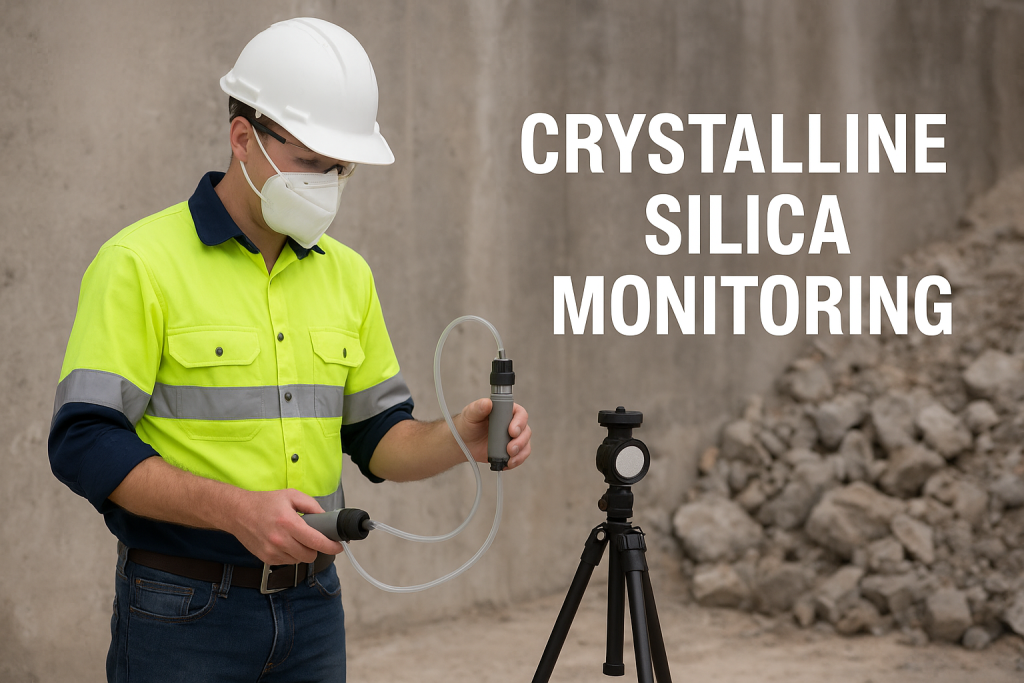If your business cuts, drills, grinds or handles materials like engineered stone, concrete, bricks, or quarry dust, you’re working with products that can release respirable crystalline silica. When airborne, these tiny particles can cause irreversible lung damage or silicosis if not properly controlled. At Audiometrics & Medical Personnel, we understand that every PCBU (person conducting a business or undertaking) is now legally required to manage risks relating to silica, especially with sweeping new rules in place across NSW and Victoria.
These include:
With Audiometrics & Medical Personnel’s expertise, exposure assessment isn’t just a box-ticking exercise. It’s genuine prevention: the earlier you identify and act on excessive silica dust, the more effectively you protect employees from devastating lung disease and shield your business from potential liability.

These services are designed to complement one another. For example, air monitoring may be repeated periodically (e.g. annually or when processes change) to confirm that controls remain effective. Health surveillance is conducted whenever monitoring or risk assessment indicates a significant exposure (as mandated by WHS laws). In all cases, our approach is fully aligned with regulatory expectations and best practice.
Audiometrics & Medical Personnel provides expert silica monitoring and advice across NSW and Victoria. Our key strengths include:
By choosing our services, PCBUs can confidently fulfil their silica management duties and protect worker health, while also demonstrating compliance with Safe Work Australia and state guidelines.
| Feature | Crystalline Silica Monitoring | General Dust Testing |
|---|---|---|
| Purpose | Health & legal compliance (WHS/EPA) | General house-keeping or comfort |
| Exposure standard | 0.05 mg/m³ (8-hr TWA) | No set exposure for nuisance dust |
| Sampling equipment | Calibrated personal/area samplers, NATA-accredited lab analysis | Basic dust collection/pump or visual |
| Reporting requirements | 30 years, register, medical monitoring | Minimal, not regulated |
| Health risks | Silicosis, lung cancer, respiratory disease | Nuisance, eye/nose throat irritation |
| Regulator | WorkSafe Vic, SafeWork NSW, Safe Work Australia | Not regulated above general OHS |
A robust monitoring program with Audiometrics & Medical Personnel covers:
Silica exposure can occur in many industries. We have provided monitoring services for clients in sectors such as:
After monitoring, we deliver a clear, customised report. Typical contents include:
Work with crystalline silica is governed by a suite of Australian regulations and codes. Key references include:
We ensure our monitoring aligns with all relevant requirements. Our reports reference these standards (including state WHS legislation and codes) and show that sampling was conducted per the correct methods. This helps clients meet their legal obligations under WorkSafe NSW, WorkSafe Victoria and Safe Work Australia frameworks.
Whether you need baseline testing, ongoing monitoring, or emergency response to a compliance order, reach out for rapid, practical silica solutions that protect your people and your business reputation.
Call 03 9819 4355 or email [email protected] to discuss your site or book an expert now. All queries are confidential and handled by qualified specialists.
Lorem ipsum dolor sit amet, consectetur adipiscing elit. Ut elit tellus, luctus nec ullamcorper mattis, pulvinar dapibus leo.

Audiometrics and Medical Personnel ATF The Trustee for KM Future Trust
03 9819 4355
Business Centre Entrance, C4, Level 1/2 Main St, Point Cook VIC 3030, Australia
30 A Verri Street, Griffith, NSW 2680